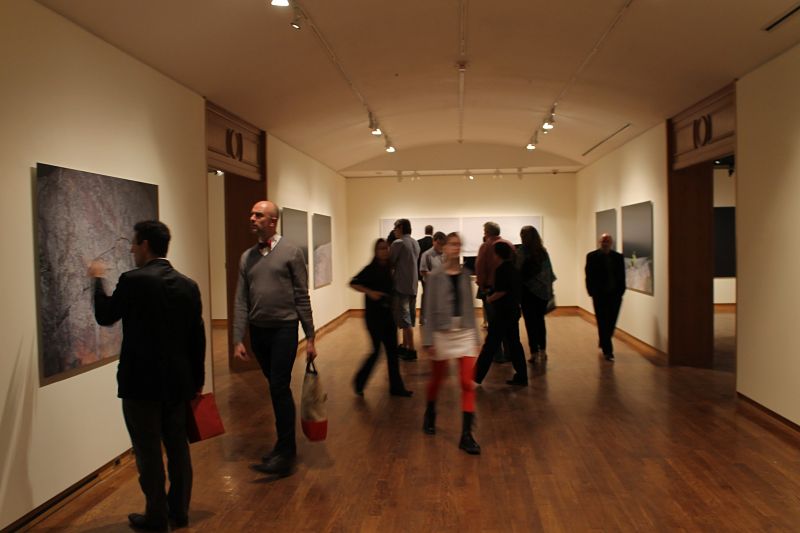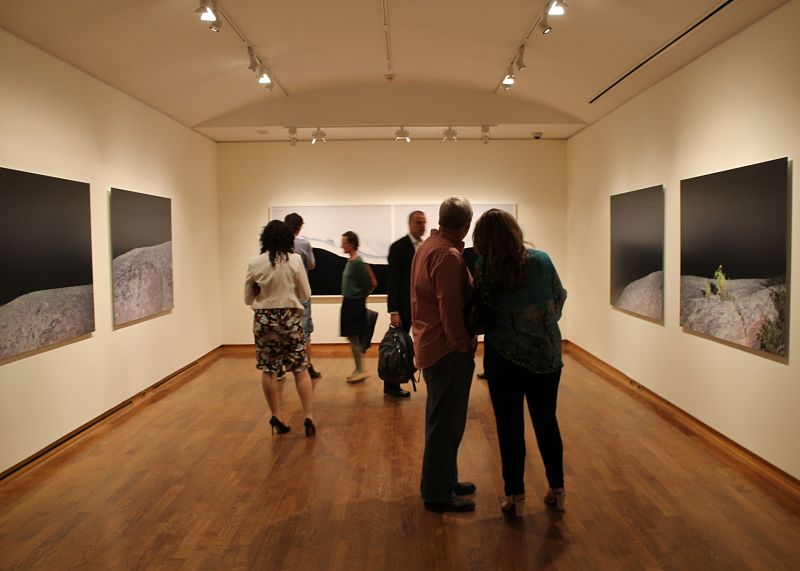Andrew Wright’s Penumbra on display at the University Toronto Art Center (UTAC) opened May 3rd as a primary exhibition for the Scotiabank Contact Festival. This is Wright’s fifth year exhibiting with Contact.
This is the first time his work for Contact has been assembled as a retrospective, displaying over a decade of his work. Bonnie Rubenstein, the artistic director for Contact, curated Penumbra.
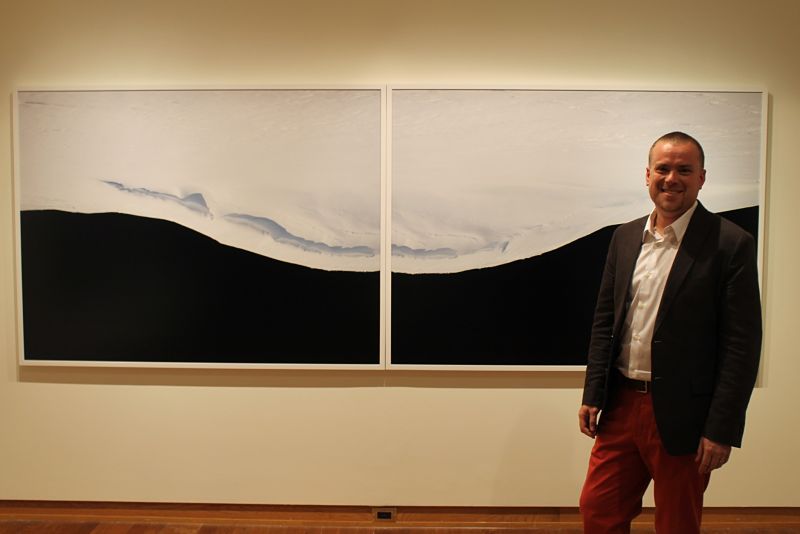 Adrew Wright, in front of his work After Kurelek, 2013
Adrew Wright, in front of his work After Kurelek, 2013
The experience of Wright’s work is delightfully disorienting. The eye travels through incredible photographic details, out of focus hazes, and flat, non-reflective surfaces. Upon entering the space the viewer is struck by Nox Borealis, a freestanding photographic sculpture. Wright studied sculpture before turning to the photographic medium. This work has departed from the traditional domain of the wall and has entered into the direct vicinity. The work challenges viewers to maneuver around and through these two representations of an inverted artic sky. Wright has created a unique perspective of a landscape. This work is separated into two prints placed on plywood and standing freely within the gallery space. The shape of Nox Borealis, as well as Still Water resembles that of minimalist sculpture. Despite this likeness, his play of the crisp white snow set against a flat black sky set in an elongated space, has a more stupefying effect upon the viewer.
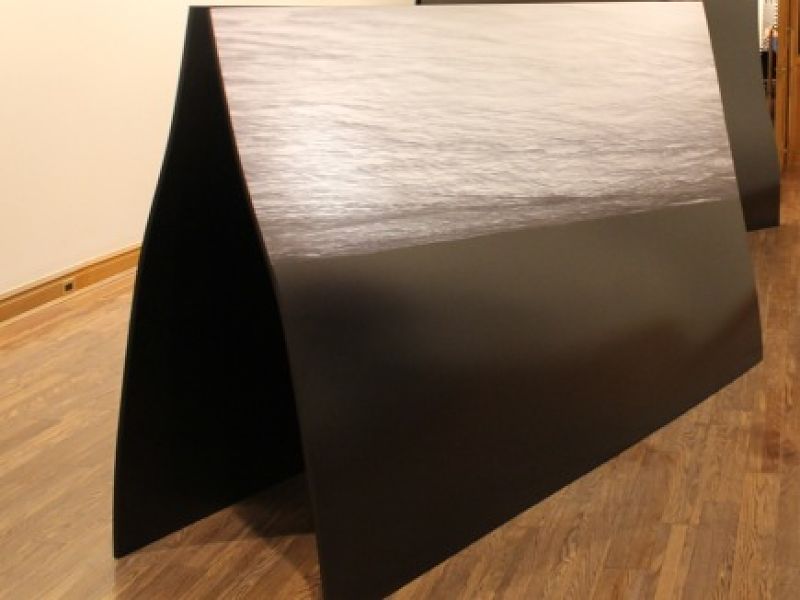 Andrew Wright, Nox Borealis, 2012
Andrew Wright, Nox Borealis, 2012
Wright has used a range of photographic technologies that expand across the history of photography, from the sixteenth century device of the camera obscura to the iPhone Apps of today. Although Wright has used both traditional and contemporary photographic technologies his works are not photographs in our traditional sense of the medium. He makes direct reference to proto-photographic techniques, he then appropriates these methods and interfaces them with modern technologies. The artist’s historical investigation of photography illustrates ways in which technology has changed how we view the world. This reference to the history of photography is made in works such as When Buildings Take Pictures Themselves, created using a camera obscura, the first photographic apparatus conceived in the Renaissance.
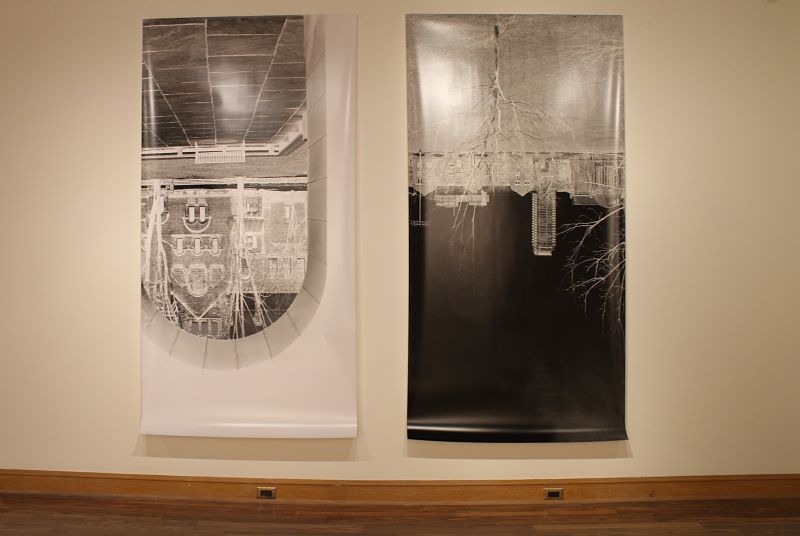 When Buildings Take Pictures Themselves, 2013
When Buildings Take Pictures Themselves, 2013
The works entitled Photogenic Drawings XXI, XXII, pay homage to the roots of photographic techniques, but were made using an Iphone app. Aided Drawing 1;2, are drawings created by using the 19th century device the camera lucida.
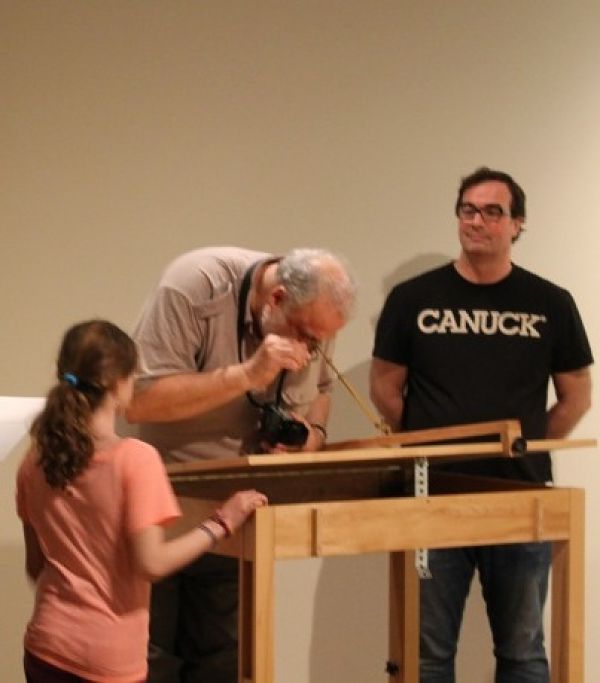 Visitor looking through a Camera Lucida
Visitor looking through a Camera Lucida
The apparatus was incorporated into the exhibition for visitors to look through, offering many ways of seeing. Wright plays upon the historical conventions of photography and turns them upside down.
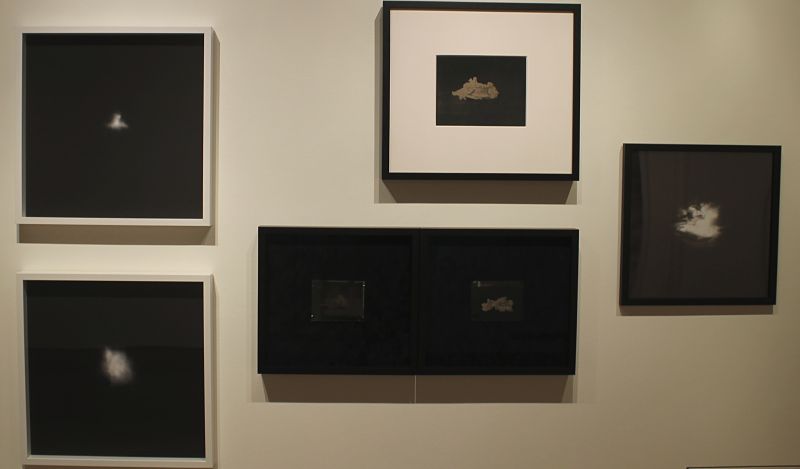 Andrew Wright, Photogenic Drawing, Antique Clouds, Prairie,2011
Andrew Wright, Photogenic Drawing, Antique Clouds, Prairie,2011
Wright’s work effectively raises the questions: “where is the photographer? Where is the photography?” His response is through ambivalence to the subject matter of his work. He removes himself as photographer when creating the camera-less images Coronae 1;2.
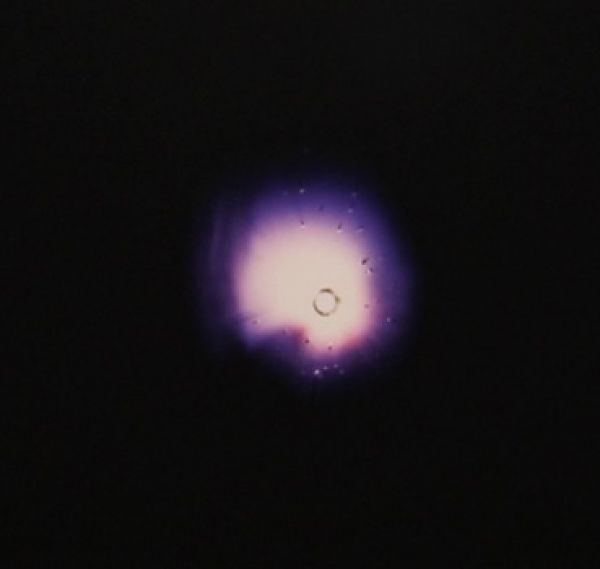 Andrew Wright, Coronae 2, detail, 2011
Andrew Wright, Coronae 2, detail, 2011
They are created by puncturing old film. These works have the appearance of astronomical specimens. Box of Fifty are works made from expired film that have been left on a windowsill for a number of weeks. The works were then printed on out of production photo paper. The viewer feels uncertainty to what they are looking at with many of these pieces.
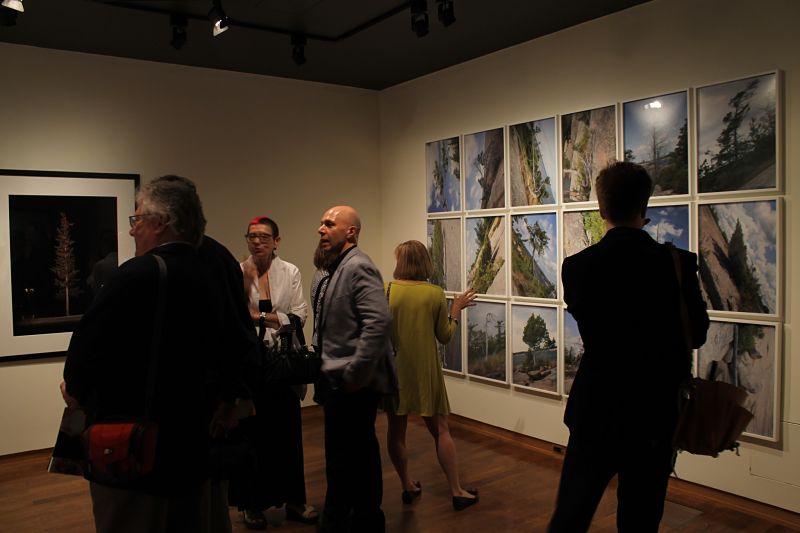 Installation view with Andrew Wright, Tree correction series, 2013 (right)
Installation view with Andrew Wright, Tree correction series, 2013 (right)
Wright’s work challenges its viewers to make sense of what they are looking at. His work asks its viewers to rummage through their visual vocabulary to make logical sense of these new ways of looking. Wright describes his work as “multi-tiered inquiries into the nature of perception, photographic structures, and technologies.” Wright’s work reflects his “interest in what makes a photograph and what makes a photographic experience.” In pursuit of the answers to these questions, the artist has abstracted and isolated the principles of the medium, and presented new ways of thinking about photography.
The show is open till June 29, 2013 at UTAC, 15 King’s College Circle. Hours: Tue – Fri, 12 – 5, Wed, 12 – 8, Sat, 12 – 4 p.m.
Text and photo: Alice Tallman

